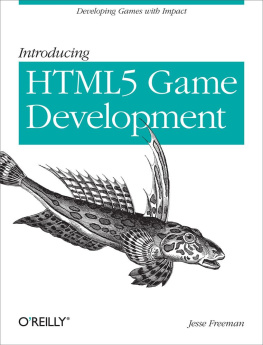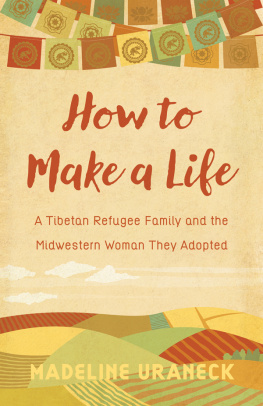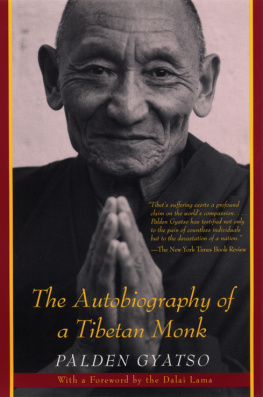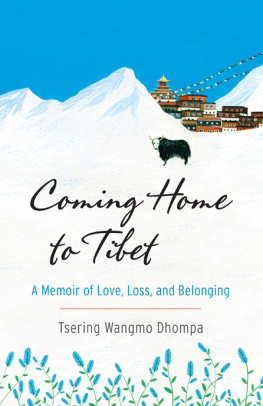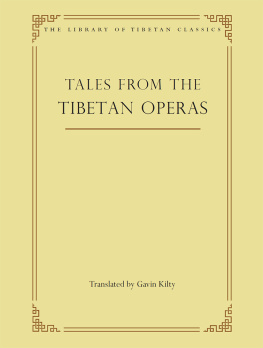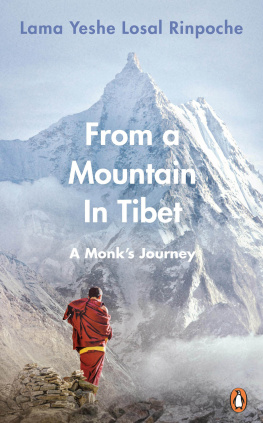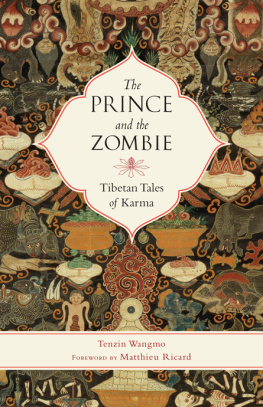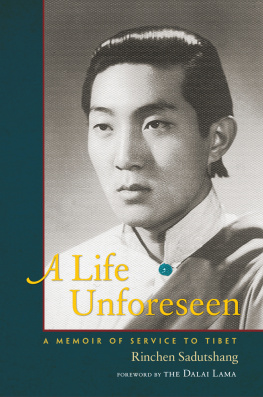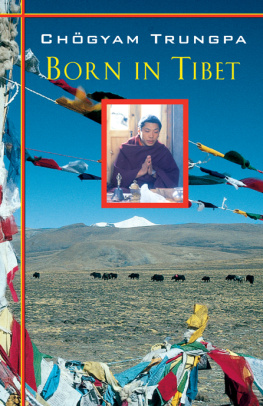It is 43 years since Tibets centuries old troubles finally came to a head and China forcefully took control of our country. Feeling a strong need to be free to continue trying to serve my people, I escaped to exile in India, followed by many thousands of Tibetans. In Tibet, despite brief intervals of relaxation, the relentless move to subsume the Tibetan identity and way of life completely under Chinese dominance has not let up. In exile, we have made great efforts to preserve and promote the Tibetan cultural heritage believing not only that Tibetans benefit from it, but also that humanity as a whole would be the poorer if it were lost. We have educated our children and re-established our various religious, cultural and administrative institutions. We could have achieved little of what we have done without tremendous help from many quarters, just as I believe we will not secure freedom in Tibet without further international help and support. Circumstances remain very tough for Tibetans in Tibet and opportunities for improvement are few and far between. Those of us who live in exile are free from the fear and oppression, but even a refugees life is marked by insecurity and uncertainty. This is why we value so highly the friendly assistance we continue to receive, not only in financial and material support, but in the personal contributions of volunteers who give us their time, their expertise and their care.
In this book, Lesley candidly describes her own experiences teaching for a year at a Tibetan vocational training institute in North India. She has included the ups and downs without glossing over the difficulties and frustrations she faced. But it is her concern for the young Tibetan students in her care that shines through and telling her own story provides an opportunity to recount theirs.
These accounts of the difficulties of life in Tibet, the hazards of escape over the mountains, the bewildering changes of life as a refugee are not new, they have been told by others many times over the last 40 years. But they were new to Lesley, and I imagine will still be moving to many other people previously unaware of what happened in Tibet. I am convinced that dignity and freedom will ultimately be restored in the Land of the Snows. And I am equally determined that this just result must be achieved by peaceful, non-violent means, taking what I call a middle way approach to our problems. If we are to succeed, we need widespread international support. I feel sure that people reading this book will be inspired to lend their backing to our cause.
Acknowledgements
Saying thank you to everyone who made it possible for me to begin a new chapter in my life as a volunteer teacher in India is almost impossible. I am afraid that I am unable to express here in black and white what I feel in my heart and soul towards you. I lack the appropriate words to sufficiently emphasise the knowledge, energy and support you have bestowed upon me.
Without the children at Selakui this book would never have been conceived. Thank you for being brave and strong in giving so much of yourselves, not only to our book, but also to me. Your love and friendship is as precious to me as that of my own children. Gratitude goes to my family and friends for their encouragement, support, love, reassurance and constant enthusiasm. Through all this, your individual strengths enabled me to realise my own ambitions. I want to mention a special friend, Tim, for helping me to see that theres a life out there to be lived. Thanks to you Tim, Im living it.
I must thank Dory, for opening the door to my adventure. Your support and advice will never be forgotten. I am also extremely appreciative to Chris and the Rizong Foundation for sponsoring my air fare to India.
I want to say a special thank you to all my friends at Selakui, for their compassion, patience and love, especially Yonten Dolma La, for putting up with my temperament and my poor attempts at Indian cooking! I want to thank my beautiful students, Chunzom Ongmu, Kalsang Yangzom, Pema Yangchen, Pema Yangzom, Tenzin, Tenzin Desang, Tenzin Dickyi, Choekyi Tsering, Tsering Diki, Tsering Dolma, Wangmo and Dawa Tsomo. You taught me as much as I taught you.
It means a great deal to me to express my gratitude to you, Sonam Sithar La and your lovely family, for your dedication and hard work on the translations.
To Louise and Joe, my two wonderful children: you both made sacrifices by giving up your mum for the sake of the Tibetan refugee children. God couldnt have blessed me with two more special people to love and be proud of.
Thanks go to Ed French, from Minus61, for the artistic and thought provoking book cover.
I owe a great deal of thanks to my Agent, Owen Burnham from L & C Literary Agency, I appreciate his logic, patience and friendship.
Finally I need to say a special thank you to my amazing husband Steve, without whom this book would not have been published.
Historical Overview
Buddhism was introduced to Tibet in the eighth century when its influence spread from India. Tibet was under Mongol rule almost continuously from the thirteenth to the seventeenth century. Chinese control grew from the eighteenth century during which time Tibet endeavoured to remain isolated from the rest of the world. Its society was still structured as a feudal system with the majority of the land in the ownership of monasteries while the bulk of the population were serfs. Following the British Empires occupation of India, China feared Britain would further expand its influence to include China, using Tibet as the back door. China therefore invaded and by 1910 had instigated direct rule of Tibet; the Dalai Lama fled to India. With the collapse of the Chinese Empire in 1911, Tibet declared its independence. The Dalai Lama returned to Tibet from India in July 1912, following the fall of the Qing dynasty. The existing amban (a high official appointed to govern Tibet on behalf of the Chinese) was expelled from Lhasa along with all Chinese troops. The Dalia Lama ruled unchallenged until the communist regime in China took hold. Once again Tibet came onto the radar of the Chinese authorities when the Chinese Peoples Liberation Army invaded the Chamdo region of Tibet in 1950, defeating ineffectual resistance from the Tibetan Army. In 1951, Tibetan representatives travelled to Beijing where a seventeen point agreement was signed giving the Chinese joint rule of Tibet. Yet the Tibetans continually fought against the Chinese occupation and the many revolts which ensued culminated in the 1959 uprising in the capital Lhasa. Chinese military might crushed the rebels and, from then on, military rule was imposed. The Dalai Lama fled to India where he and his followers were granted political asylum. The Dalai Lama established a Tibetan government in exile. In 1965, the Chinese abolished serfdom in Tibet and the area that had been under the control of the Dalai Lamas government from 1910 to 1959 (-Tsang and western Kham) was renamed the Tibet Autonomous Region or TAR. A proviso of the autonomy was that the Head of Government should be ethnically Tibetan, but this was never the case. During the 1970s, the Chinese Army pursued a course of violent cultural revolution in Tibet whereby thousands of the ancient monastic estates were broken up and cultural sites were vandalised. Tibetan libraries were raided and books destroyed in an attempt to obliterate the Tibetan language and history. The Panchen Lama remained in Lhasa after 1959. However, following his death in 1989, China rejected the Dalai Lamas choice for his successor. It is believed that the Dalai Lamas chosen Lama was subsequently executed by the Chinese. The Chinese appointed their own choice of Lama, causing increased tension with the Tibetan government in exile. This tension persisted and relations between the Chinese and Tibetan governments remained poor. When the seventeenth Reting Lama was ordained in Tibet in 2000, the Dalai Lama refused to recognise him. China encouraged the migration of Chinese settlers into the Tibetan region causing further tensions. It was felt by Tibetans that this was a further attempt by China to dilute and ultimately eradicate the distinct culture of Tibetans. China continues to portray its role in the region as that of the moderniser, bringing trade, improved living standards and freedom from the Tibetan feudal system. Internationally, organisations have expressed fears about human rights violations in Tibet. Amnesty International has stated its extreme concern that basic human rights are being routinely abused. Tensions in the region are still running high and numerous examples of monks self-immolating (suicide by setting fire to oneself) as an act of protest, have been reported in 2011. However, most governments officially recognise the sovereignty of China over Tibet today.

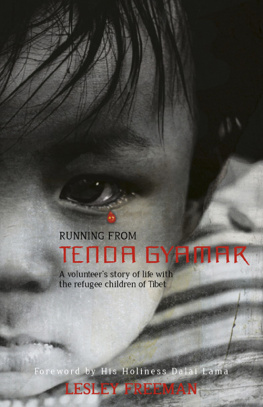


![Freeman - Pro design patterns in Swift: [learn how to apply classic design patterns to iOS app development using Swift]](/uploads/posts/book/201359/thumbs/freeman-pro-design-patterns-in-swift-learn-how.jpg)

